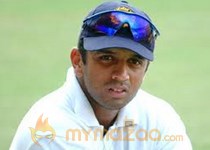Not too long ago, India’s batting constituted the most lustrous in the game. A line-up starting with Virender Sehwag and continuing with Rahul Dravid, Sachin Tendulkar, Sourav Ganguly and VVS Laxman presented a bowler’s nightmare and was certainly the prime reason for India’s impressive record and the elevation to the No 1 spot in the ICC Test rankings in 2009.
More Columns
By this time, Ganguly had retired but a suitable replacement had been found in Gautam Gambhir who at his peak in 2009–2010 had a career average of 57 and had risen to the No 1 spot in the ICC Test batsmen's rankings.
During the golden decade – the first of the new millennium – the Indian batsmen notched up feats that were beyond any other team despite the presence of batting giants in other sides.
It was indeed the golden age of batting as three batsmen – Sehwag, Brian Lara and Chris Gayle - went on to emulate Don Bradman in scoring two triple hundreds in Tests. Two Sri Lankan batsmen in Kumar Sangakkara and Mahela Jayawardene breached the 600-run mark while notching up a third wicket stand against South Africa.
Partnership records were set down the line and totals of 700 plus became commonplace as bowlers wondered what they were doing wrong. More and more batsmen crossed the 10,000-run mark and triple hundreds were not exactly as rare as they were some two or three decades ago.
But somehow even amidst these batting delights, the Indian quintet held the connoisseurs’ attention like probably no other batting combination before it. Sure, in the past there was always Bradman but which other line-up in the game’s long and illustrious history had four batsmen averaging over 50 simultaneously?
And it was not just a freak case of the batsmen playing just a few games. Sehwag, Tendulkar and Dravid had all played more than 100 Tests while Gambhir had represented India in almost 40. In addition, Laxman’s average at its peak was in the late 40s.
If the success of the batting quintet was the chief reason behind India’s rise to its exalted position in the ICC rankings, the failures were the main cause of the team’s fall in 2011. In quick succession, first in England and then in Australia, the much vaunted line-up failed with age finally catching up with it.
This has led to the retirements of Dravid and Laxman while Sehwag and Gambhir because of failures are out of favour. A 40-year-old Tendulkar is still carrying on even as he is clearly past his best and is in the twilight of his career.
New players have come in and while Virat Kohli is being touted as a future great and Cheteshwar Pujara is averaging 65 after 13 Tests, these are early days yet for them.
One does not know for certain whether great days are ahead for Indian batting but it can be taken for granted that it will never again be as lustrous as it was during the golden phase that I pointed out.
During the same period, as I said, batsmen from other countries too were right up there thanks to the feats of Ricky Ponting, Mike Hussey and Mathew Hayden (for Australia) and Sangakkara, Jayawardene and Samaraweera (for Sri Lanka).
I mention the trios for all of them were averaging 50 after numerous Tests and late in the decade, even as Hayden called it a day, Michael Clarke arrived to make it a threesome.
Now following the retirements of Ponting and Hussey and with the decline of Sehwag, Gambhir, Jayawardene and Samaraweera – their averages have all slid below the 50 mark - the focus is on the batting of South Africa and England.
That living legend of international cricket, Jacques Kallis, has been averaging in excess of 55 for a long time and Hashim Amla has joined him with batting that is an ideal blend of an insatiable appetite for runs as well as effusive elegance. Lately AB de Villiers has made it a trio with his own brand of attacking batsmanship with Graeme Smith who is no stranger to the 50 club not far behind.
But, perhaps at the moment, following their successful Ashes campaign, it is England’s batting line-up that has caught one’s attention. Even a cursory glance at the list makes it obvious that here is a combination that deserves to be up there with England’s best of all time even if there is no one with an average of 50.
Four of the top five – Alastair Cook, Jonathan Trott, Kevin Pietersen and Ian Bell - have averages in the late forties and two others – Joe Root and Matt Prior - are in the early forties. Three of them have played 90 or more Tests and have notched up 20 or more hundreds.
Pietersen and Trott, for some time during their careers, have topped the 50 mark. But of course, like in all great batting combinations, it is not just about figures. They also have the class, skill and experience to back them up.
So right now, it is a battle between South Africa and England for the title of strongest batting combination in Test cricket and fittingly enough the two countries occupy the first two slots in the ICC rankings. But it will be a long time before the cricketing world sees anything to match India’s lustrous batting line-up at its peak.







